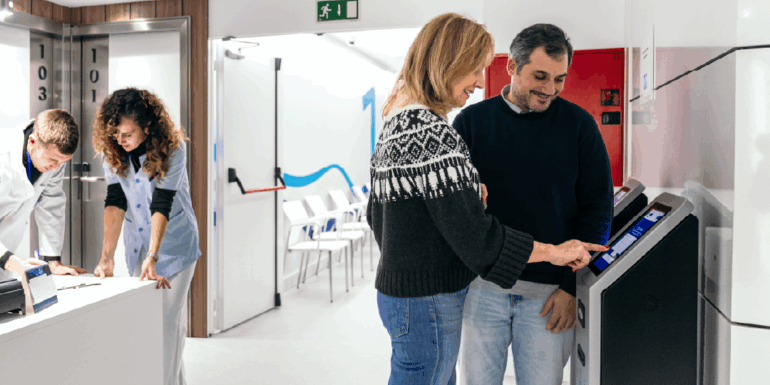Waiting to see a physician is often described as one of the most frustrating parts of the healthcare experience. In a previous piece, I explored the systemic reasons why patients spend so much time in waiting rooms, from scheduling inefficiencies to provider shortages. This time, I want to turn our attention to the tools that could transform the experience, particularly the role of digital technology and artificial intelligence.
Healthcare has historically been slow to adopt innovations that have already revolutionized other industries. Airlines, for instance, use predictive analytics to manage demand, while retailers rely on real-time data to streamline inventory. Patients deserve the same kind of efficiency when it comes to something as critical as their health. Fortunately, new technologies are finally being integrated into medical practices, and the potential is profound.
Table of Contents
AI as a Catalyst for Efficiency
Artificial intelligence is becoming a practical solution to long-standing operational challenges. Algorithms can analyze scheduling patterns to predict bottlenecks, optimize provider availability, and even anticipate the duration of certain types of appointments. For example, AI can flag when a new patient consultation is likely to run longer than a follow-up, helping administrators allocate the right amount of time in advance.
This shift from reactive to predictive scheduling reduces cascading delays throughout the day. By learning from historical data, AI systems become more accurate over time, adapting to each practice’s unique rhythms. The result is not just shorter wait times, but smoother operations that benefit both patients and providers.
Digital Check-In and Pre-Visit Preparation
Another area where technology makes a measurable impact is the check-in process. Traditional waiting rooms often serve as bottlenecks themselves, with patients filling out forms or updating insurance details on paper. Digital tools now allow patients to complete these steps remotely, sometimes days before the appointment.
When patients arrive, they can bypass administrative hurdles and move directly to clinical care. This small change reduces time spent in the waiting room, but also improves accuracy by eliminating rushed handwriting or missed information. From the provider’s perspective, having complete and verified data beforehand allows for more focused, meaningful interactions during the visit.

Telehealth and the Redefinition of Waiting
Telehealth has also redefined what “waiting” means in medicine. In many cases, patients no longer need to physically travel to a clinic, sit in a waiting room, and rearrange their schedules. Instead, they can connect with a provider from their home or office at a designated time.
Of course, telehealth is not appropriate for every medical need, but for follow-ups, prescription refills, and certain routine consultations, it is a powerful tool. By removing physical constraints, telehealth reduces both patient wait times and provider strain. More importantly, it allows patients to feel that their time is respected, something that strengthens trust in the healthcare system as a whole.
Patient Experience Beyond the Clock
It is worth remembering that reducing wait time is not just about numbers on a clock. Patient experience is deeply psychological. A 15-minute wait may feel much longer if the process is confusing, impersonal, or lacking in communication.
Here, too, technology can help. Real-time updates via text message or patient portals let individuals know when their provider is running behind, creating transparency and reducing anxiety. Digital interfaces can also offer educational materials during the wait, turning idle time into an opportunity for engagement. The emphasis is on respect and recognizing that a patient’s time is as valuable as the clinician’s.
Challenges and Considerations
Of course, the adoption of technology is not without its challenges. Infrastructure costs, training requirements, and concerns about data privacy must all be addressed. Additionally, AI is only as effective as the data it learns from. Practices must ensure that their information systems are accurate, secure, and representative of the diverse patient populations they serve.
Still, the trajectory is clear. The combination of AI, digital check-in systems, and telehealth represents a meaningful step toward reducing inefficiencies that have plagued healthcare for decades.

Looking Ahead
As someone who has spent much of my career examining the intersection of healthcare operations and patient outcomes, I believe technology offers the most promising path forward. Shortening wait times is not just about convenience; it is about restoring dignity to the patient experience, improving provider efficiency, and ultimately delivering better care.
Artificial intelligence will continue to refine how we schedule and allocate resources, telehealth will broaden access and redefine the very concept of waiting, and digital tools will turn administrative friction into streamlined processes.
The real challenge now lies in adoption. Healthcare organizations that embrace these innovations will not only improve their efficiency but also strengthen the trust and satisfaction of the communities they serve. The waiting room may never disappear entirely, but with the right technology, it can become a much smaller and more manageable part of the patient journey.
